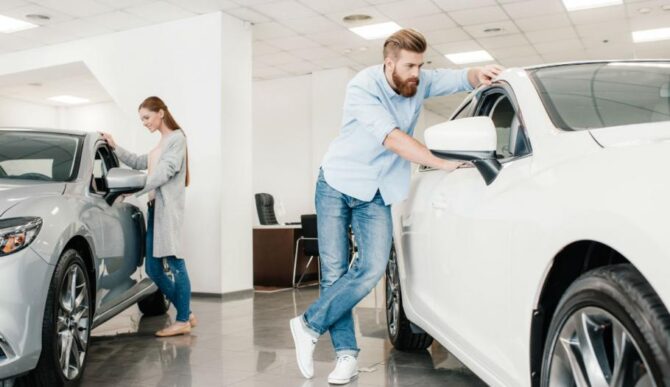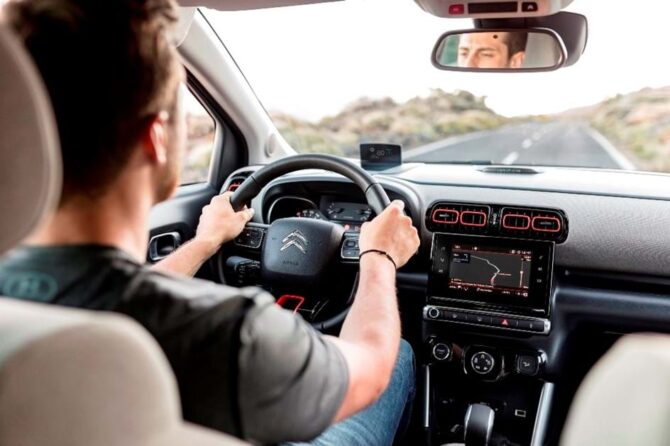
There are many mistakes and common pitfalls that people make when buying a used car as opposed to a brand new one. With a new car, as long as your finances are okay, you can be confident that the car itself will be fine (it’s new after all) but this isn’t the case with a used car.
Previous owners, sketchy service history and former accidents could all complicate the life of a used car, so it’s useful to check vehicle history on vehiclereport.me to avoid some of these mistakes when buying a used car. This guide by CarPages can also help if you’re struggling to make the right choice.
Without further ado, here are things you should avoid when buying a used car.
1. Buying it based on looks alone

Source: maxitaxi-transport.com
Okay, so we’ve all been guilty of this one, especially when we were teenagers. Although we all want a car that looks the part, we’re wasting our time if the vehicle itself is run down or has A LOT of miles on the clock.
If you’re not the kind of person who knows a lot of technical things about cars, bring a friend or family member (often your Father) who can give you advice. Sometimes the drab-looking car is the most reliable vehicle with the best value for money.
2. Not getting the car checked
Before buying ANY used car, it’s essential that you get the car checked by a third party that doesn’t have any skin in the game. This gives you reassurance that the car is in the condition that the seller claims it to be in and also gives you an insight into its past and service history.
In Canada, services like CARFAX are usually used for this. With CARFAX, you can find out about the vehicle’s accident history, liens, unfixed safety recalls, approximate resale value, and more. You might even find that you’re getting ripped off for price and didn’t know it!
3. Avoiding the test drive

Source: aquelamaquina.pt
You should always really test drive a vehicle, whether it’s used or brand new. Aside from checking that the car actually runs okay, it’s also just a test of whether you personally like the way that the car runs.
We all have our own little habits and strengths/weaknesses when it comes to driving – you ideally want to find a car that suits these habits.
Test drive the vehicle on different types of roads that you drive on regularly, including inclines, highways, small roads, and certain terrains if necessary. You also need to find out whether the driving position is comfortable for you over long periods of time.
4. Not checking the car’s recall status
We quickly glossed over this before, but did you know that 1 in 6 Canadian cars have unfixed safety recall issues? In other words, there’s a 1 in 6 chance that you could buy a used vehicle that’s been deemed unsafe by the manufacturer.
Make sure to check this thoroughly before spending money on an unsafe vehicle!
5. Not knowing the features you need

Source: motosluzby-riha.com
We all use cars differently, and if you’ve been driving for a while, then you’ll know what features you need in your car. In countries like Canada, things like heating and heated seats are non-negotiable for many people, though you may have other stipulations too.
Whether you want air-con for the summer or you need a way to play Spotify through your car speakers, make sure that all your driving essentials are there.
6. Shopping around based on monthly repayments alone
While budget is obviously important, make sure that you take several factors into account when searching for a used car – not just the monthly repayments.
Sometimes it’s cheaper in the long run to buy a used car outright than it is to spend regular amounts of cash on monthly repayments. If you find a used car that you like, you might be better off scraping some cash together to buy it there and then.
Obviously this depends on your unique financial situation, but it’s worth considering if you can afford it!
7. Negotiating at the used car dealership

Source: carsguide.com.au
If you see a used vehicle you like online or in a magazine, consider calling or emailing the seller first to begin negotiations before turning up in person to start negotiating.
Once you’re already there and the car is right in front of you, you’re more likely to pay a higher price simply because you’re right there and you don’t want to waste your time or the seller’s time.
Starting initial negotiations remotely allows you to have some distance (literally and figuratively) between you and the vehicle, making it easier to say no to a price you don’t like.
8. Buying a used car online
If you’re looking at used cars online, especially on auction sites like eBay, it can be easy to give into impulses and buy a used car in the heat of the moment without having even seen it in person.
You don’t know how it drives, if it looks like the photos, and if the price you just paid was actually fair or not.
If you feel yourself getting swept up in the moment of an online car auction, try to ground yourself, calm down, and look for cars that you can test drive before actually putting money on the table.
9.You don’t actually like it!

Source: autotrader.com
Whether a car is new or used, sometimes you just simply don’t like it.
The car might be not to your taste in terms of appearance or style. It might not drive how you like. The driving position may get on your nerves or feel weird.
A car can be great on paper, but if you can tell that you’re going to hate driving it, you might as well look for an alternative that’s easier to stomach.
We hope you enjoyed these tips that can help make your used car buying experience a breeze. Good luck on your vehicle-buying journey!



